© ROOT-NATION.com - Use of content is permitted with a backlink.
Nature has had 3.8 billion years of evolution to perfect survival processes – from the design of bird wings to the method of flower pollination. In contrast, humans have only existed for a fraction of Earth’s lifespan, yet we constantly seek inspiration from nature. Throughout this time, nature has provided a kind of blueprint for humanity to follow.
Nature is perfect in its uniqueness, efficient, resource-conserving, and self-sustaining. The designs and processes it has developed have been tested over millions of years, proving their effectiveness in diverse environments.

For example, the hexagonal structure used by bees to build their hives. The high strength and stability of the geometry make it ideal for the bees, while efficiently using a minimal amount of material. Today, humans apply this structure in various fields, from airplanes and spacecraft to construction and packaging. Biomimicry refers to the study and imitation of natural designs and processes for practical use. In this article, we will explore some of the designs and processes nature offers and how they have been adapted to create more sustainable human-made structures.
Airplanes
The most famous and oldest example of biomimicry is the airplane. It is believed that the flight of pigeons inspired the Wright brothers to create the first airplane, which they launched in 1903. From the shape of the bird and the way its wings work, to how the bird glides through the air, all these elements served as blueprints for modern aircraft. These features are carefully studied, and scientists strive to replicate them.
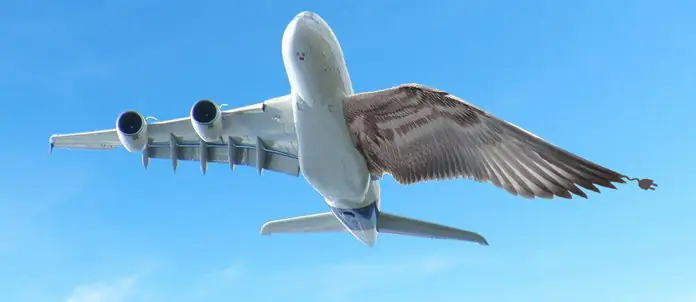
Aircraft designers shape the wings to mimic the curved surface of a bird’s wing, creating a difference in air pressure above and below the wing to generate lift. The rudders at the tail of the plane imitate a bird’s tail feathers to provide balance and directional control. By applying natural design principles, scientists have created a machine heavier than air that can travel through the sky. In addition to commercial aircraft, the V-shaped formation of birds, like geese, has also been studied.

The V-shaped formation helps conserve energy by capturing the updraft from the bird in front, reducing the amount of energy required by the bird behind to stay airborne. Military squadrons apply this principle to maximize energy efficiency.
Read also: Top 8 Military Technologies of the Future to Pay Attention to Today
Velcro
Swiss engineer George de Mestral invented Velcro in 1941 after returning from a walk in the forest and noticing burrs from burdock plants sticking to his clothing and his dog’s fur. Upon examining them under a microscope, de Mestral saw that the burrs had tiny hooks on their seeds, which caused them to latch onto clothing and fur.
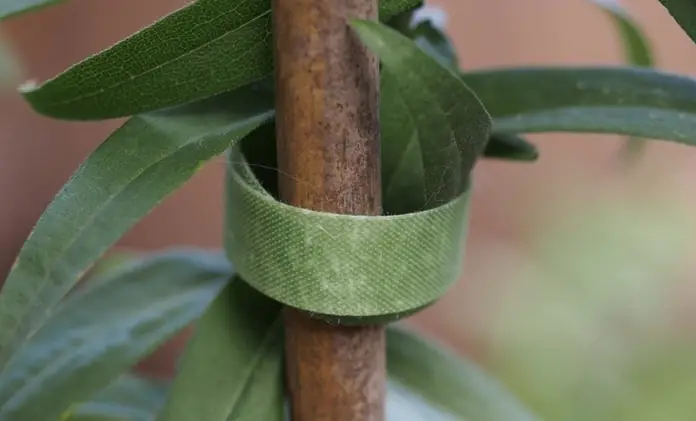
Inspired by the hook design, de Mestral created Velcro—a system made up of two parts. One side featured tiny hooks, while the other side had small loops. When the two sides were pressed together, the hooks would catch onto the loops, forming a strong bond. However, the connection was designed to be strong enough to hold but easy enough to separate with a sufficient amount of force.
Today, Velcro is used in a wide range of items, from clothing and bags to medical bandages and cable organizers. In fact, NASA also used Velcro to secure objects in zero gravity conditions. Inspired by the simple yet effective seed dispersal design, Velcro has become a ubiquitous element in everyday life. It serves as an alternative to buttons and zippers, offering advantages such as ease of use, reusability, and efficiency.
Read also: What passenger trains of the future will look like
Termites
Termite mounds are a remarkable structure created by termites to provide shelter and regulate the living environment for their colony. Made from soil, chewed wood, dirt, and saliva, these mounds feature a central, smoke-like ventilation structure connected to underground tunnels and chambers. This design helps maintain an optimal environment within the subterranean areas.

Hot air rises through the central structure, allowing cooler air to enter through lower openings. This ensures that the environment inside the mounds is maintained, regardless of external conditions. The design also facilitates ventilation and gas exchange. These structures can reach up to 9 meters in height and stand for decades, showcasing their durability.

Inspired by termite mounds, architects have designed buildings that mimic this structure. One of the most well-known examples is the Eastgate Centre in Zimbabwe. Designed by Mike Pearce, the Eastgate Centre aims to maintain a controlled climate for occupants in a hot climate while reducing energy consumption for cooling.
Read also: Why Cryptocurrencies Are Rising After Trump’s Victory: Explained
Self-cleaning surfaces
Despite existing in murky water, the lotus remains clean thanks to the ultrahydrophobic nature of its leaves. Tiny, wax-covered bumps cover the surface of the lotus leaf, causing water droplets to roll off, carrying dirt and debris with them. The nanostructures on the leaf’s surface (these tiny bumps) reduce the adhesion of water droplets, allowing them to pick up dust particles. This phenomenon is known as the “lotus effect,” a term first introduced in 1977 by Barthlott and Ehler, who described the self-cleaning properties of the lotus leaf.
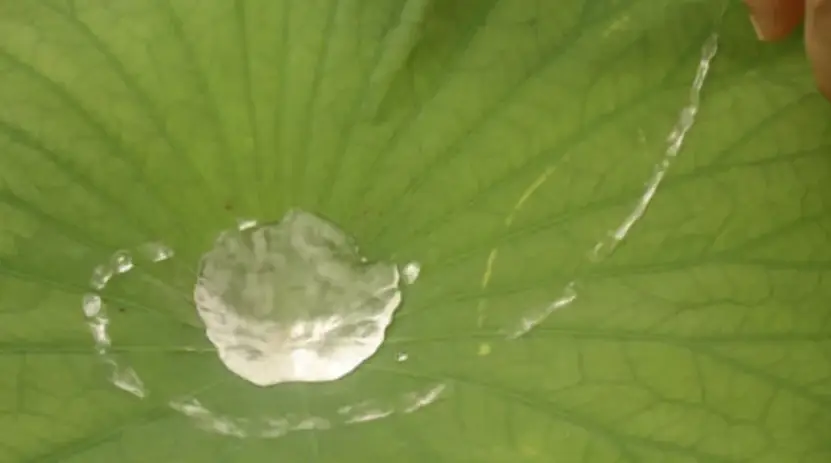
Since then, scientists have explored coatings inspired by lotus leaves that are self-cleaning. The American company Sto Corp. developed a paint inspired by the lotus effect, which repels dirt and grime.

In addition to self-cleaning paints, fabrics, and coatings, this method is also used to develop materials for solar thermal collectors, traffic control sensors, and awnings.
Read also: What Passenger Airplanes of the Future Will Look Like
Japanese high-speed trains
Kingfishers are incredibly agile and fast birds that swoop in on their prey to catch it. They approach quietly, especially near bodies of water, to avoid startling their catch. The unique design of the kingfisher’s beak gives it this advantage. It features a narrow, long, and pointed beak, with the diameter increasing from the tip to the base. This design helps distribute the pressure created when striking the water, reducing the splash noise and ensuring an efficient, quiet, and stable dive.
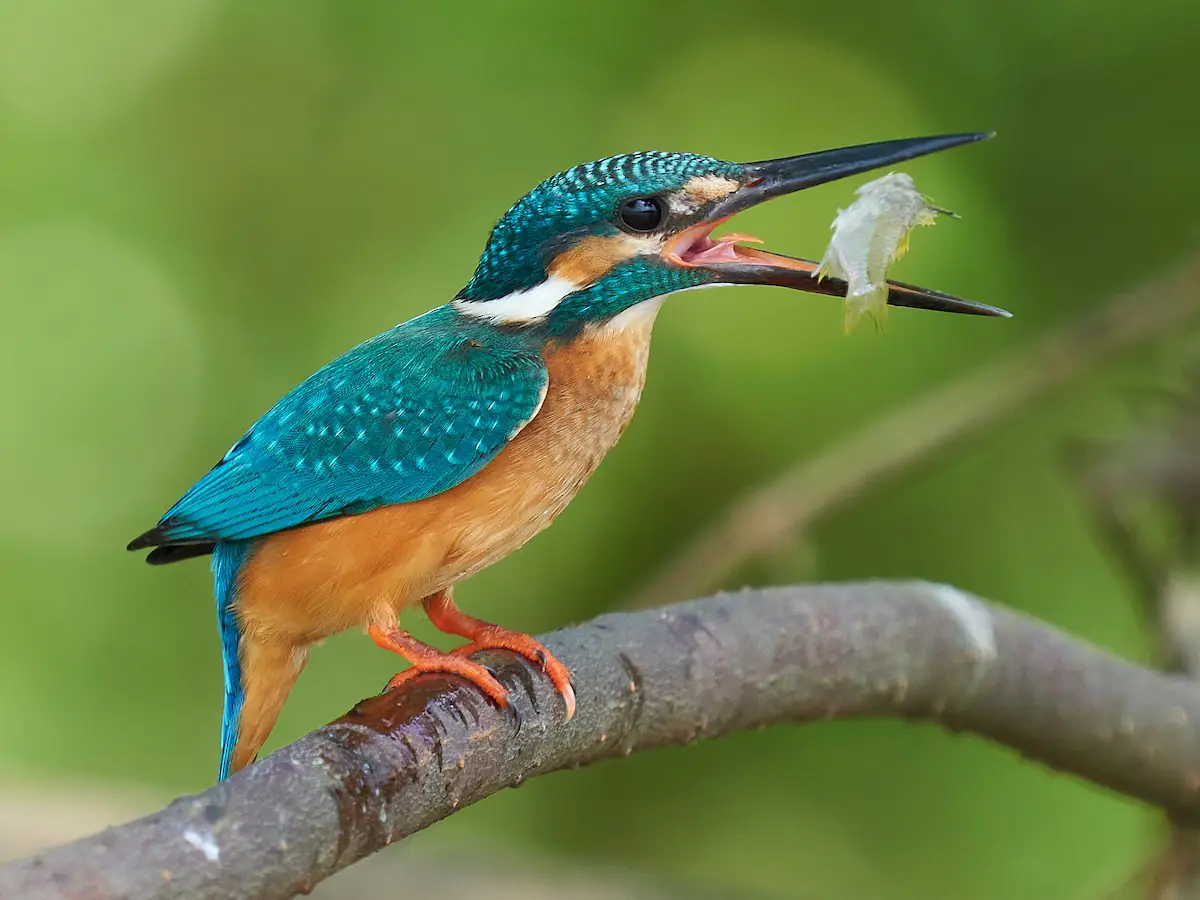
Japanese engineers who developed the Shinkansen high-speed train initially faced the problem of a loud tunnel boom caused by the atmospheric pressure created at the front of the train.

To solve this problem, engineers looked to the design of the kingfisher’s beak. They redesigned the front of the train to mimic the shape of the beak, eliminating the tunnel boom. This design also allowed the train to move 10% faster and consume 15% less electricity.
Read also: Europa Clipper: Everything You Need to Know Before the Launch of the Largest Spacecraft
Innovations inspired by sharkskin
Sharks are known for their speed and swimming expertise underwater. It’s no surprise that scientists have tried to replicate shark skin for various applications, including making swimsuits and antibacterial coatings. Shark skin is made up of tiny, tooth-like structures called dermal denticles, which feel smooth in one direction and serrated in the other. These dermal denticles serve two functions: they act as protective armor and enhance movement through water.
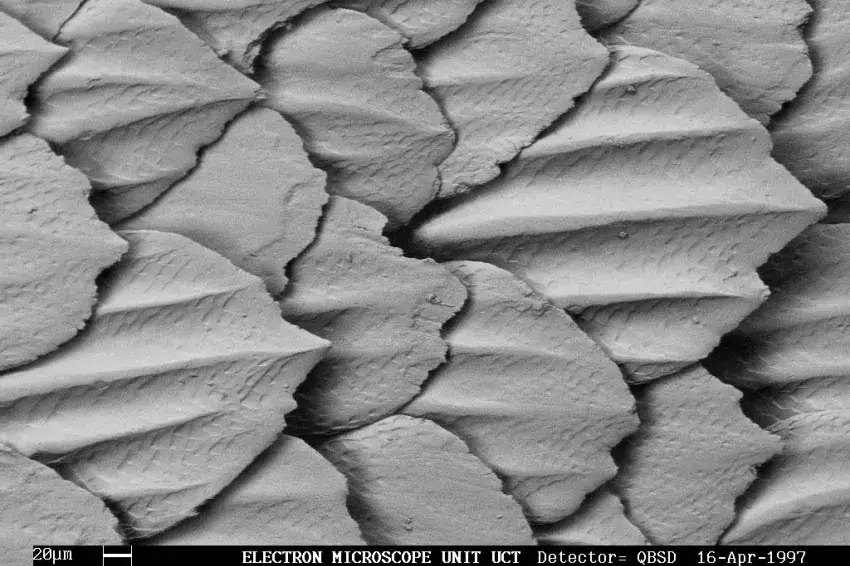
The term dermal denticles has proven to be a powerful tool for sharks. By disrupting the flow of water with their serrated edges, dermal denticles reduce the drag the shark experiences while moving through the water, allowing it to swim quickly, efficiently, and quietly. These structures also prevent microorganisms from attaching to the shark’s skin. The tiny ridges along the skin’s surface stop unwanted hitchhikers from catching a free ride.
Inspired by this unique surface, scientists replicated it for swimsuits to enhance their performance. These swimsuits were so successful at the Olympic Games that one of them, the Speedo LZR Racer, was banned by the International Swimming Federation.

However, some researchers argue that sharkskin-inspired swimsuits actually increase drag rather than reduce it. A shark’s body is much more flexible than a human’s, which is why dermal denticles help reduce resistance. While the swimsuits were developed by observing shark skin, their success might be a byproduct of a trial-and-error process rather than a direct replication of the shark’s hydrodynamic advantages.

Shark skin has also been studied for the development of medical technologies, such as plastic sheets applied to hospital walls. These sheets help prevent the spread of bacteria and other harmful microorganisms, as they are unable to adhere to the walls.
Read also: End-to-End Encryption: What It Is and How It Works
Honeycomb structures
As mentioned in the introduction, the honeycomb structure used by bees is a highly efficient geometric form. The reason bees chose the hexagonal shape has been a subject of scientific interest since the time of Charles Darwin, who hypothesized that this shape was adapted to optimize the wax production process. This form maximizes the available storage space while using the least amount of wax.
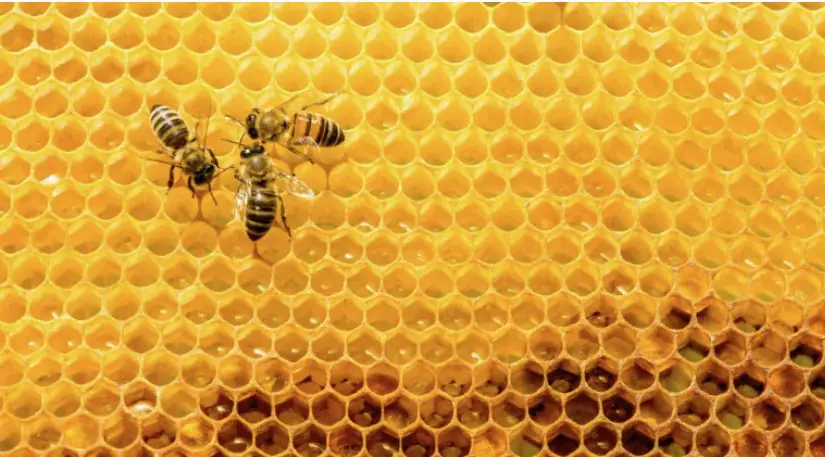
In 1999, American mathematician Thomas Hales proved that the hexagon minimizes perimeter area and maximizes space while using the least amount of material. This is known as the “honeycomb conjecture.” In addition to storing wax, hexagonal cells also protect and hold larvae, ensuring that the wax does not melt in hot climates.

Inspired by bees, scientists apply geometry in airplane mirrors, building materials, and wind turbine blades. The design focuses on resource efficiency, reducing weight and material costs.
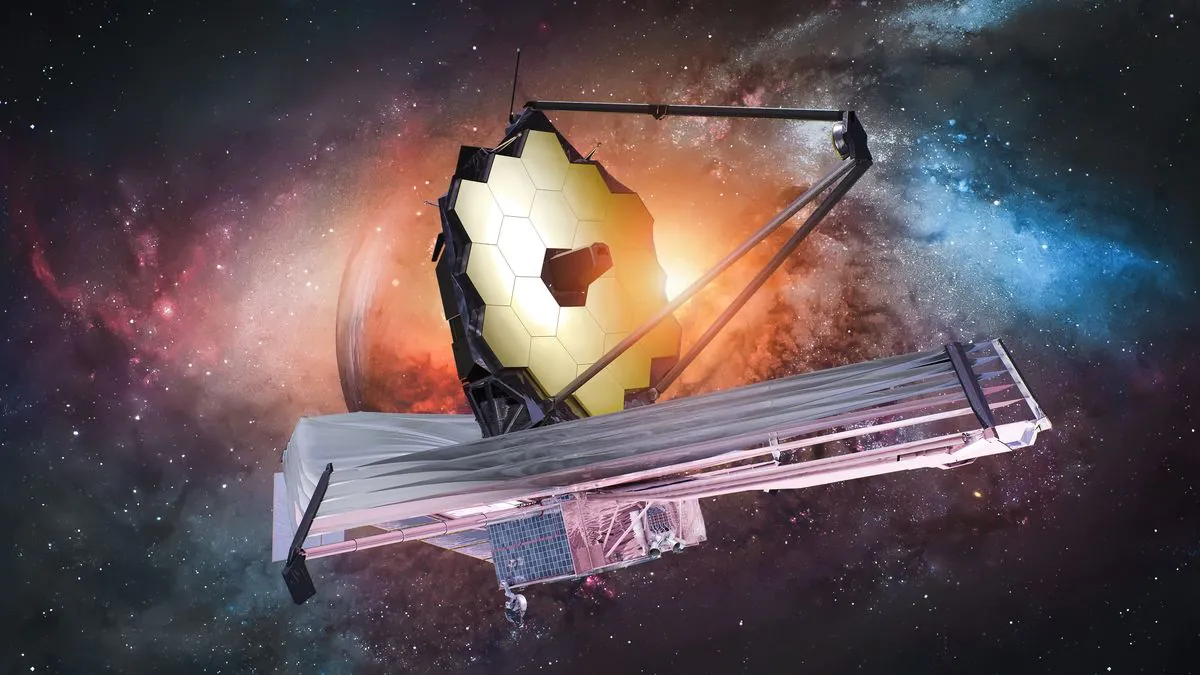
Specifically, the mirrors of the James Webb Space Telescope (JWST) consist of 18 hexagonal segments arranged in a honeycomb pattern. This geometry maximizes the surface area for light capture while maintaining structural integrity and minimizing weight, which is crucial for space missions.

These are just a few examples of biomimicry and how nature inspires efficient designs and innovations. This list is by no means exhaustive and only touches on the improvements nature has made in its structures and processes. Today, there are many natural systems and processes that scientists are studying to enhance existing technologies.
Nature continues to evolve and optimize its systems, benefiting not only the natural world but also inspiring people to create innovations from which they can draw inspiration.
If you are interested in articles and news about aviation and space technology, we invite you to our new project AERONAUT.media.
Read also:
- 6 Intercontinental Ballistic Missiles (ICBMs) That Could End the World
- How to Choose a Bicycle: A Beginner’s Guideі


